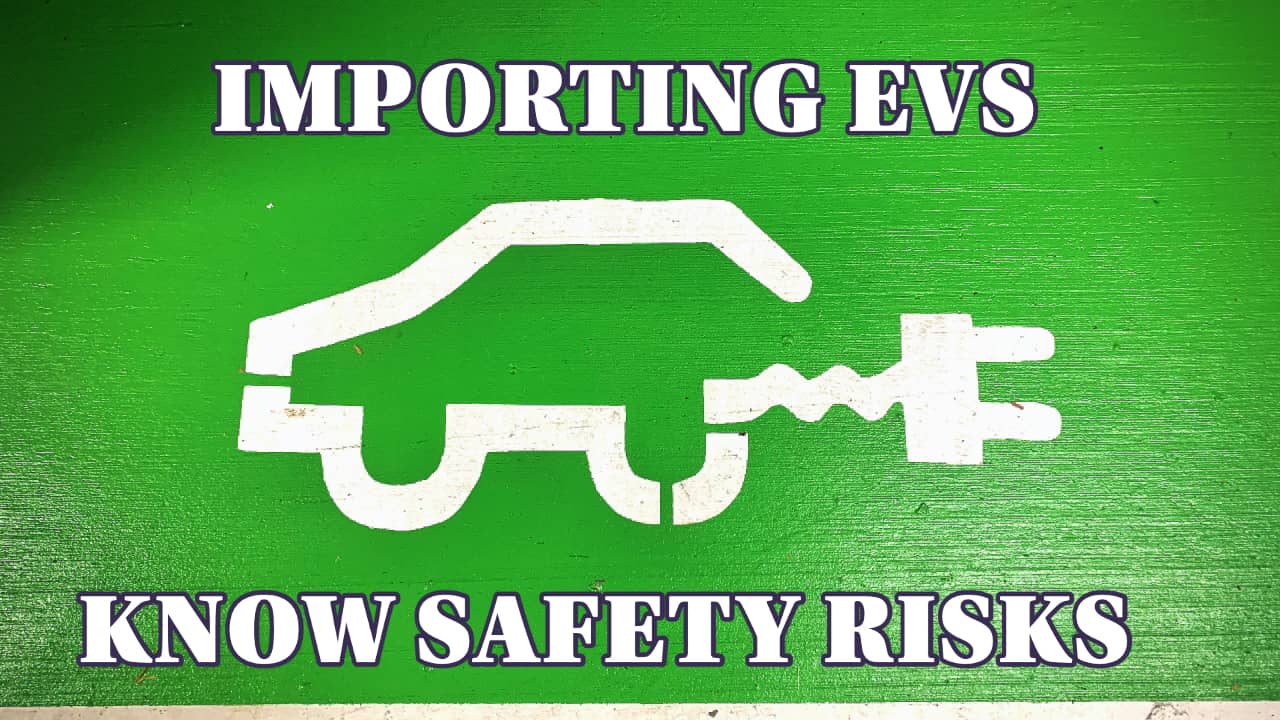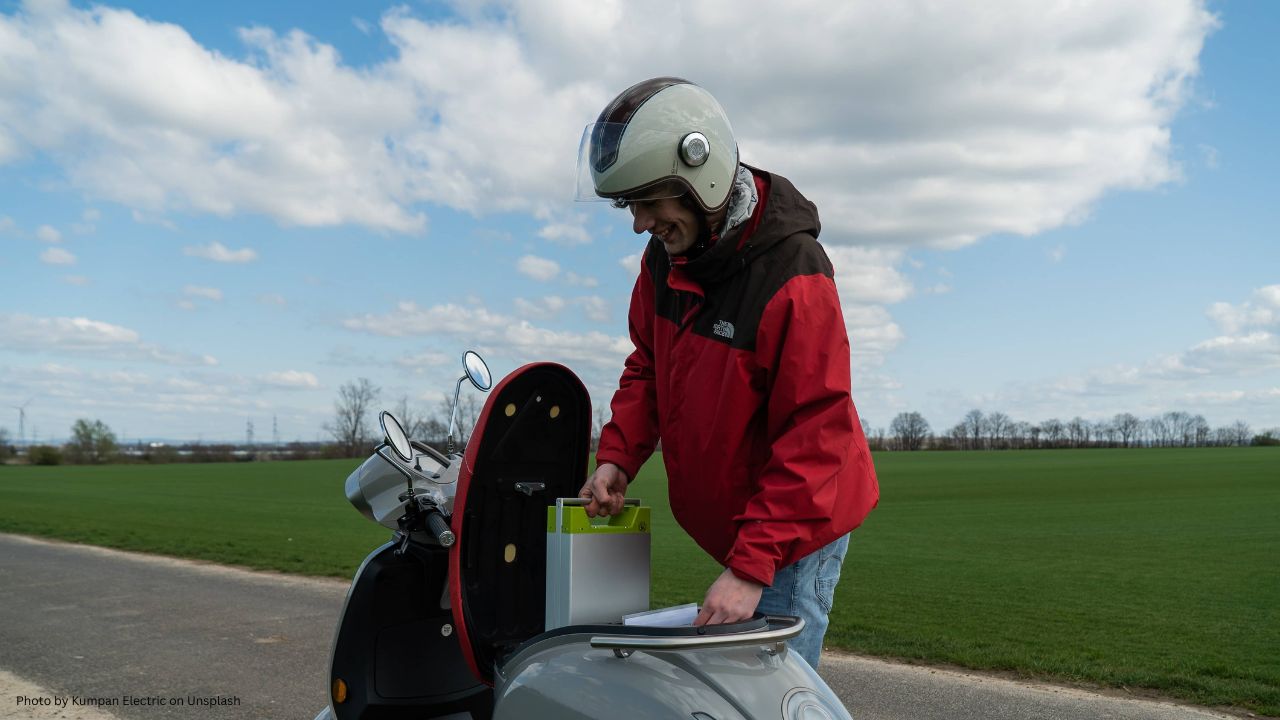
The Dangers of Transporting EVs with Lithium-ion Batteries Along the Supply Chain
6-minute read
Today, lithium-ion (or “Li-ion”) batteries are an essential everyday item found throughout the world and in almost every household or workplace in one form or another.
They are found in portable devices such as mobile phones, mobility devices, recreation, manufacturing and power storage, through to larger products, such as electric vehicles (scooters, bicycles, cars, buses and trucks) and even superyachts and ships.
Their size-to-power ratio, storage and output make them ideal units in the 21st century, where technology is essential in our lives. Given their ubiquitous uses and rapidly increasing demand, it is no surprise that global shipping volumes are also growing rapidly.
However, this technology comes at a cost, and in the event of failure, it can have catastrophic consequences. There are clear dangers and safety concerns to consider when transporting Li-ion batteries.
It is important to recognise that the supply chain also handles these batteries and related products throughout their lifespan: used, second-hand and end-of-life.
Li-ion batteries are generally very safe in terms of the risk to individual consumers.
Notwithstanding the small individual risk, with increasing numbers being shipped and increasingly larger consignments in each shipment, transport casualties have been significant. They are expected to become even more common in the future.
Awareness of risks is increasing in all modes of transport. Recently, serious and sometimes catastrophic incidents involving lithium batteries have become more commonplace, with fires related to batteries reported in nearly all modes of transport (ship/air/land) as well as in warehouses/storage and during use.
The surging demand for electric vehicles is making the logistics industry increasingly focus on the dangers of transporting lithium-ion batteries.
Worldwide, the transition from petrol and diesel-powered vehicles is gathering pace, and New Zealand is no exception.
Advancements in EV technology create demand not only for the transportation of the electric cars, vans and trucks themselves but also for scooters, bikes, batteries in containers, and scrap and recycled batteries – but it comes with new challenges and safety risks.

Lithium-ion (Li-ion) batteries are increasingly impacting shipping safety with a number of fires, an example being the fire onboard the Hoegh Xiamen in Jacksonville, Florida, in 2020, which was linked to a car battery igniting.
The message is therefore spreading throughout the supply chain that the fear of lithium-ion battery fires on vessels requires special risk-prevention measures.
So much so that it prompted the International Cargo Handling Coordination Association (ICHCA) to run a webinar recently entitled Lithium-Ion Battery Cargoes – Fire Risks and Emergency Response, with three expert presenters outlining the risks and the required preventative measures.
The first presentation, delivered by Captain Randall Lund, senior marine risk consultant at Allianz Risk Consulting, explained the peculiarities of “thermal runaway” – the state that occurs when the heat generated in a lithium-ion battery exceeds the amount of heat that is being dissipated to its surroundings.
Fire spreads from one cell to the neighbouring cells, and very quickly, you have thermal runaway, with temperatures rising to about 800 degrees Celsius.
Capt. Randall said that a thermal runaway event in shipboard incidents is almost inevitable unless the vessel’s crew can take immediate action to mitigate the fire.
Unfortunately, this is rarely possible due to a lack of early detection, a shortage of manpower, and a lack of adequate firefighting capabilities on board.
Once they have taken off, electric battery fires burn at such extreme temperatures and for such extended periods of time (possibly days) that they present accident investigators with an overwhelming challenge in proving the cause and origin of such incidents because few, if any, traces of evidence remain for them to examine.
So what can be done?
The message from Allianz is that the primary focus must be on prevention, and they have a list of recommendations for manufacturers, shippers, carriers and insurance based on the information and testing currently available.
Of the main hazards associated with Li-ion batteries, the obvious one is fire.
Li-ion batteries contain electrolyte, an ignitable liquid, and auto reignitions are common.
The thermal runaway mentioned earlier can result in explosions. Explosions can also result from the release of ignitable vapour or gases in a confined space.
Then there is the release of toxic gases caused by any of the first three hazards.
These four hazards are most commonly caused by substandard manufacturing of battery cells/devices, over-charging the battery cells, short-circuiting, and damage to the cells or devices.
The preventative steps Allianz recommends to guard against these four most common causes of loss start with the choice of manufacturer.
Manufacturing the batteries is a complex process, and packaging specifications are very detailed. Both are key to keeping Li-ion batteries safe during transportation.
Industry standards and testing requirements have been developed over the past few years to provide guidance on testing and validating the batteries.
The UN Manual of Tests and Criteria sets out a series of design tests that manufacturers and test summaries must complete and have been a requirement for international air cargo and vessel shipments since January 1, 2020.
The ideal state of charge (SOC) for transporting purposes (depending on the battery manufacturer’s recommendation), the battery size/type, the time anticipated in storage before being used, and its ultimate usage.
Allianz recommends that the carrier requests information about the battery’s SOC before loading the cargo.
The third area of concern is the risk of short circuits. This is a problem if the protection provided by the manufacturer between the terminals or cells (cathode/anode) is compromised.
Once a short circuit develops, if the heat being generated by the short circuit is unable to dissipate (as in a closed package or a container), the internal temperature will rise quickly to the point of ignition, which may be quickly followed by thermal runaway, or an explosion caused by the rapidly- expanding gases.
Allianz recommends that shippers and carriers request handling instructions from manufacturers and train staff to follow packing instructions.
Cargo damage is one of the most common claims handled by the Allianz marine team, and battery shipments, even when packaged according to dangerous goods regulations, have to withstand the rigours of transit.
Cartons can get dropped, hit by forklifts, or crushed by superimposed cargoes, any of which can compromise the battery/cell and introduce one of the previously listed hazards.
Under no circumstances should any damaged package be moved or transported onwards.

In terms of electric vehicles on car carriers and within containers, Allianz says battery-related fires “have caused considerable physical damage, financial losses, environmental pollution, and loss of life in a manner never seen before”.
Cars are usually tightly packed in the stow on a car carrier or ferry, meaning that a fire starting in one would spread quickly. Some operators are turning to fire-proof blankets manufactured specifically for EVs.
For warehouse operators, Allianz advises precautions such as keeping batteries away from direct sunlight and long-term high temperatures and ensuring spatial separation from other combustible materials of at least three metres.
Floor stacking of Li-ion batteries should be strictly controlled in designated areas with limited stack heights, and rack storage should not be permitted unless the building and the racks are fully protected with a sprinkler system, with solid metal horizontal and vertical barriers between each storage bay.
Damaged batteries should be removed immediately from storage and production areas and preferably placed in an area rated for fire resistance.
Allianz says that Li-ion battery fire risks will likely ease over time as manufacturers, carriers, and regulators address the current transportation challenges. At the same time, as Li-ion battery technology improves, battery energy density increases, heightening the risk and severity of battery failures.
Source: The New Zealand Shipping Gazette and Lithium batteries whitepaper by insurers P&I Club, TT Club and scientific consultants Brookes Bell. The full paper can be found here.
P.S. Easy Freight Ltd helps New Zealand importers & exporters to save money on international freight and reduce mistakes by guiding how to comply with Customs and biosecurity rules.
➔ Contact us now to learn how we can assist you.
